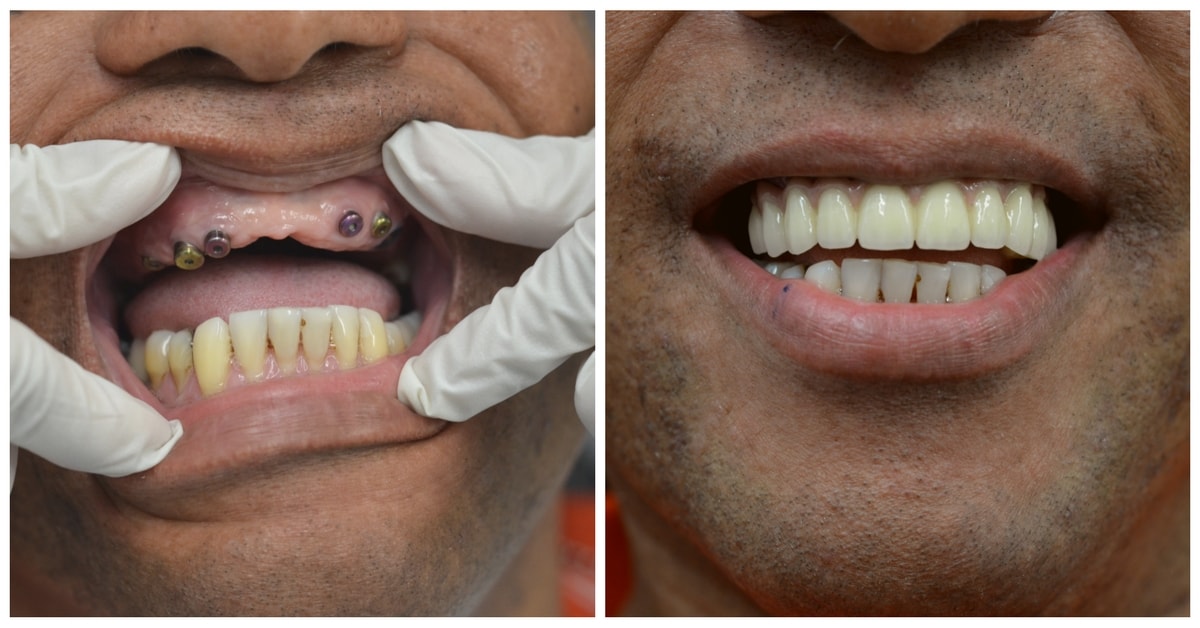The Main Principles Of Dental Implants
The Main Principles Of Dental Implants
Blog Article
9 Simple Techniques For Dental Implants
Table of ContentsAn Unbiased View of Dental ImplantsGetting The Dental Implants To WorkDental Implants Fundamentals ExplainedOur Dental Implants Statements
are clinical tools surgically implanted right into the jaw to recover a person's ability to chew or their look. They give support for man-made (phony) teeth, such as crowns, bridges, or dentures. When a tooth is lost because of injury or condition, an individual can experience problems such as fast bone loss, malfunctioning speech, or adjustments to chewing patterns that result in discomfort.
Structure of The Dental Implant System picking dental implants, talk to your oral supplier about the potential benefits and risks, and whether you are a prospect for the procedure. Things to consider: Your total health is an important consider figuring out whether you are a good prospect for oral implants, how much time it will certainly take to recover, and the length of time the dental implant might remain in area.
Cigarette smoking may affect the recovery process and reduce the lasting success of the implant. The recovery process for the implant body might take several months or longer, throughout which time you typically have a momentary joint in location of the tooth. the oral implant treatment: Thoroughly comply with the dental hygiene directions offered to you by your dental supplier.
Dental Implants Fundamentals Explained
Implant failing can cause the demand for another surgical procedure to repair or replace the implant system. Brings back the capability to chew Brings back cosmetic appearance Helps keep the jawbone from shrinking due to bone loss Preserves the health of the surrounding bone and gums Helps maintain surrounding (neighboring) teeth steady Enhances lifestyle Damage to surrounding natural teeth throughout dental implant positioning Injury to the surrounding tissues during surgical treatment, such as sinus perforation Injury during surgery (for instance, crack of surrounding jawbone) Inadequate function, such as really feeling like the teeth do not attack with each other typically An experience that the tooth is loosened or twisting in position resulting from an abutment screw loosening Implant body failing (looseness of the dental implant body) as a result of systemic infection, which may be most likely in clients with uncontrolled diabetes because of neighborhood infection in bone and gum tissues sustaining the dental implant body because of delayed recovery, which might be more probable in people who smoke Problem cleansing the gums around the implant, resulting in bad dental health Untreated gum disease Post-surgical pins and needles because of nerve impingement or damage Constantly inform healthcare companies and imaging professionals that you have oral implants before any type of magnetic vibration imaging (MRI) or x-ray treatments.
FDA is not aware of any type of adverse events reported for MRI or x-ray treatments with oral implants. Dental implants systems are normally constructed from products that adhere to global agreement requirements of the International Company for Standardization (ISO) or ASTM International. These criteria have information of what makes get redirected here a safe product.
Oral implant systems are evaluated according to global agreement criteria. Biocompatibility testing, to reveal that physical contact with the gadget does not cause difficulties like inflammation or sensitive response, is component of the examination that helps make certain the materials in the oral implant system are risk-free and do not trigger unfavorable effects when implanted in people.

How Dental Implants can Save You Time, Stress, and Money.
Some individuals are not qualified for oral implant surgical procedure. It is for dental cosmetic surgeons to operate people with: acute illnessuncontrollable metabolic diseasebone or soft tissue disease or infectionIf these issues are fixed, an individual can have the surgical treatment. Dental Implants. In, oral specialists avoid operating people with: If people with any of the above undergo oral implant surgical treatment, there is a greater danger of the implant failing
Some people have a jawbone abnormality that prevents enough bone for a dental implant from creating. In such situations, a specialist may need reference to perform a ridge modification. This involves raising the gum tissue to subject the area of flawed bone. The doctor will certainly then use a bone or bone replacement to fix and accumulate the area.
Dental dental implant surgical procedure is an individualized procedure. Provide you time to recover. Attach the message and last crown, bridge or denture.
Next, your specialist will carefully put the dental implant into your jaw. Lastly, your surgeon will rearrange your gum tissues and close the cut with stitches. If your dental implant is near the front of your mouth, your dental practitioner will make a momentary tooth for you to put on till you heal. By doing this, you will not have a gap in your smile while you recuperate.
Fascination About Dental Implants
During the recovery stage, your jawbone ought to fuse to the dental implant. This process can take anywhere from 3 to nine months.
Once your dental implant heals, your dental practitioner can affix the abutment (small adapter article) and your final reconstruction (crown, bridge or denture). This generally takes regarding one hour to complete and might need a second small surgical treatment. You shouldn't really feel any discomfort throughout why not look here your oral implant procedure due to the fact that your provider will use drug to numb your gums.
Report this page